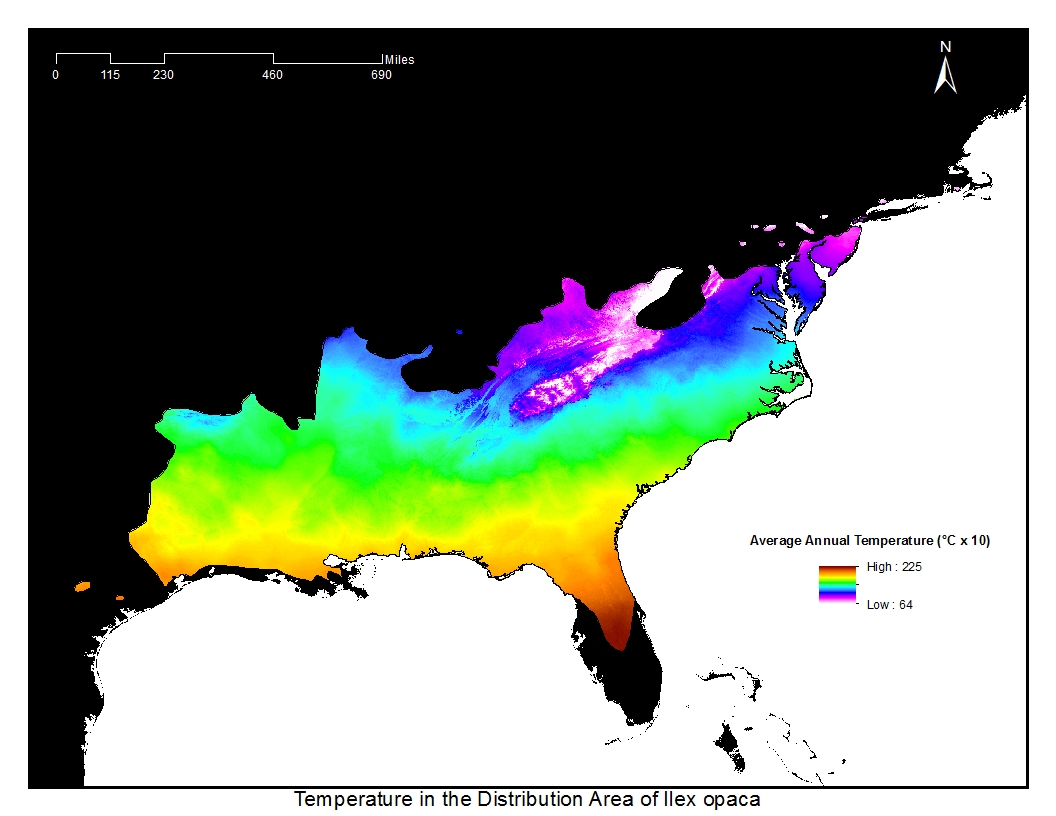The American holly, Ilex opaca, is also known as white holly or Christmas holly. The name “Christmas holly” comes from the notable used for Christmas decorations, which started when pilgrims in 1620 noted its similarities to the English holly back home, also used for Christmas decorations. The distribution of the American holly is similar to that of the loblolly and shortleaf pines combined.
Typically, hollies are found as scattered trees and not in groups or stands.
American holly can grow 3 to 4 feet per year under prime conditions. Older American hollies can grow up to 50 feet, though most American hollies are between 15 and 30 feet. The tallest individuals are 100 feet tall, with almost 50 inches in trunk diameter. Over 100 years is considered old for an American holly, though they have been known to reach 140 years.
American holly prefers humid climate conditions. Growing season can vary from 150 days further north to year round in Florida. It prefers the relative warmth of southern states but can survive average low temperatures of -20° F. It is recognized as the hardiest broadleaf evergreen tree.
American holly tolerates even very nutrient poor soils, but prefers moist, slightly acidic, well-drained sites. It cannot tolerate large periods of flooding. American holly is shade tolerant, although growth is reduced under shade. Shade allows for greener leaves.
American holly is dioecious, as hollies tend to be, meaning there are separate male and female trees. Flowering can begin anywhere between 3 and 9 years of age, with flowers appearing from April to June. The flowers have four to six small white petals and appear on both the male and female trees. Pollination is done by insects.
The fruit is commonly called a berry, though it is not technically a berry. The fruit is usually red but can be orange or yellow. Each fruit has four seeds. The fruit matures from September to December.
Hollies are easily transplanted. Trunks typically sprout, and cuttings from the wood can be successfully grown, though root cuttings are not ideal.
The largest danger to American holly is the harvesting of branches with berries for Christmas decorating. This is often done by casual persons to wild American hollies, in ways that often resulted in the death of the tree. Additionally, fire is a large danger, which may be the cause of hollies being found predominantly as individuals.
American holly fruit is eaten by birds and mammals. Leaves are also eaten by mammals. American holly is not poisonous. While not typically recognized as a honey tree, it does produce good honey.




